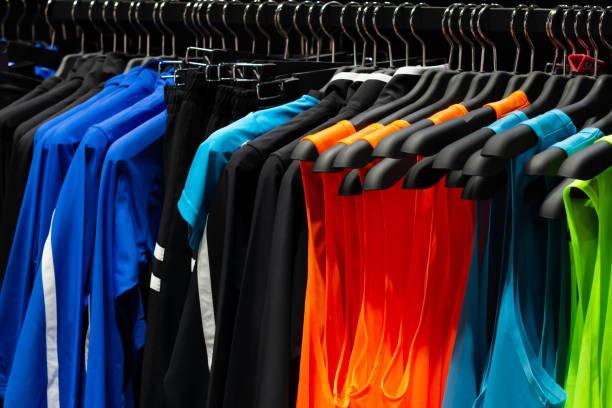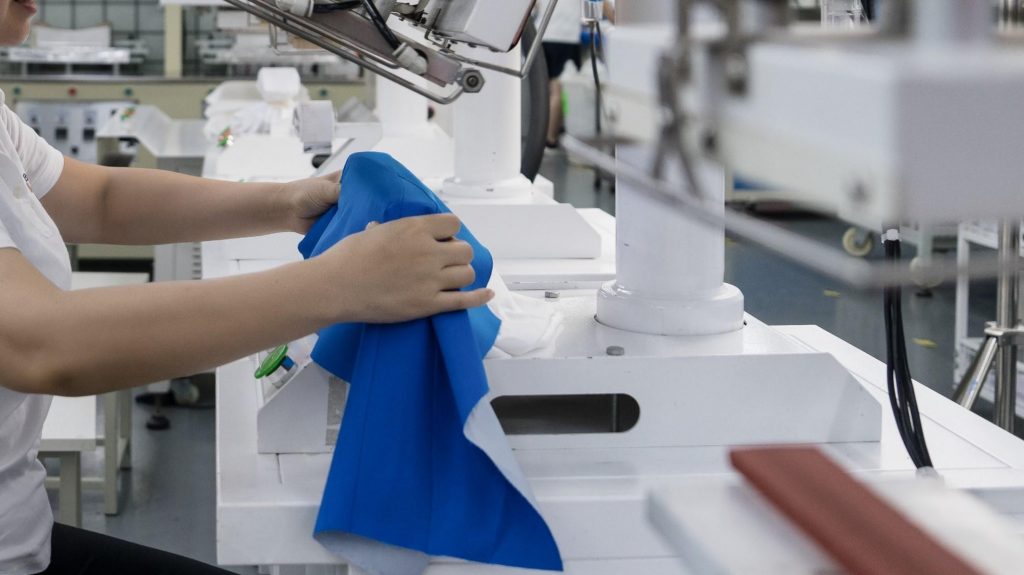Creating custom activewear shirts that are both stylish and functional is an art and a science. Whether you are designing for a sports team, a fitness brand, or personal use, the goal is to blend aesthetics with performance features that enhance comfort and durability. This comprehensive guide will walk you through the entire process—from design conception to material selection, printing techniques, and final production—ensuring your custom activewear shirts stand out and perform well.

Designing Your Custom Activewear Shirts
Step 1: Define Your Design Concept
The foundation of any great custom activewear shirt is a well-thought-out design concept. Begin by brainstorming ideas that reflect your team’s identity, brand message, or personal style. Consider incorporating logos, slogans, or symbolic imagery that resonate with your audience.
– Color Palette: Choose colors that complement your brand and enhance visibility, especially important for outdoor activities or team events. High-contrast colors make graphics and text stand out effectively.
– Graphics: Use high-resolution images optimized for printing. Simple logos or bold artwork often work best for activewear.
– Personalization: Adding individual names, numbers, or motivational quotes can create a sense of belonging and motivation among wearers.
Design Tips:
– Keep it simple to avoid clutter.
– Use contrasting colors for readability.
– Test your design with mockups before finalizing.
– Choose legible typography that aligns with your brand personality.
– Seek feedback from your team or peers to refine your design[1][2].
Choosing the Right Fabric and Features
Fabric Selection
The fabric you choose directly impacts the comfort, performance, and durability of your custom activewear shirts.
– Polyester: Lightweight, moisture-wicking, and quick-drying, ideal for high-intensity workouts.
– Cotton Blends: Comfortable and breathable but may retain moisture.
– Spandex Blends: Offer stretch and flexibility for unrestricted movement.
– Performance Fabrics: Engineered with moisture-wicking, anti-chafing, and odor-control properties.
Performance Features to Consider
– Moisture-Wicking: Keeps sweat away from the skin to maintain dryness.
– Ventilation Panels: Enhance airflow for better breathability.
– Flatlock Seams: Reduce friction and irritation during movement.
– Reflective Elements: Improve visibility in low-light conditions.
– Odor Control: Prevents unpleasant smells during extended wear[1][3].
Style Options
– Short Sleeve Tees: Versatile and breathable.
– Long Sleeve Tees: Provide extra coverage for cooler weather.
– Tank Tops: Maximize airflow and arm mobility.
– Compression Shirts: Support muscles and reduce fatigue.
– Hoodies: Ideal for warming up or cooler conditions[3][4].

Printing and Decoration Techniques
Common Methods
– Screen Printing: Ideal for bold, clear designs with vibrant colors; great for bulk orders.
– Embroidery: Offers a professional, durable look, perfect for logos and team names.
– Heat Transfer: Cost-effective for adding personalized names and numbers; flexible for small batches.
– Direct-to-Film (DTF) Transfers: Provides colorful, long-lasting prints that maintain sharpness over time[1][5][13].
Customization Tools
Many providers offer online design studios where you can upload logos, add text, and preview your custom activewear shirts before ordering. These tools often include access to stock graphics and fonts to help you create the perfect design[2][4][8].
Sizing and Fit Considerations
Proper sizing is essential for comfort and performance in activewear.
– Measure chest, waist, hips, and shirt length accurately.
– Refer to manufacturer sizing charts and consider ordering samples.
– Offer a range of sizes to accommodate different body types, especially for team orders.
– Consider adjustable features like drawstrings or elastic bands for a more personalized fit.
– Avoid too tight or too loose fits to prevent discomfort or chafing[1][7].
Sustainability in Custom Activewear
Eco-friendly options are increasingly popular and feasible without sacrificing performance.
– Look for fabrics made from recycled materials.
– Choose manufacturers who use eco-conscious production methods.
– Sustainable activewear can be a unique selling point, appealing to environmentally conscious consumers.
– Ensure that sustainable fabrics still meet performance needs like moisture-wicking and durability[1].
Tips for Styling Your Custom Shirts
– Pair your custom activewear shirts with matching bottoms for a cohesive look.
– Use layering pieces like custom hoodies or jackets for colder weather.
– Incorporate reflective accents for safety and style.
– Use personalized prints or embroidery to add a unique flair.
– Consider the occasion—design practice wear differently from competition or casual wear[9][10].
Conclusion
Making stylish yet functional custom activewear shirts involves a blend of creative design, careful fabric selection, and thoughtful production techniques. By focusing on performance features like moisture-wicking and fit, while also emphasizing bold, clean designs, you can create activewear that not only looks great but enhances athletic performance. Sustainability and personalization further elevate your custom shirts, making them unique and meaningful to wearers. Whether for a team, brand, or personal use, well-crafted custom activewear shirts are a powerful tool for identity, motivation, and comfort.

FAQ
1. What materials are best for custom activewear shirts?
Polyester blends with moisture-wicking and stretch properties are the most popular for their lightweight, breathable, and quick-drying features. Cotton blends offer comfort but may retain moisture[1][3].
2. How can I personalize my custom activewear shirts?
You can add names, numbers, logos, slogans, or motivational quotes using embroidery, screen printing, heat transfer, or DTF printing techniques[1][5][8].
3. What printing method is best for durability?
Embroidery and screen printing are highly durable. DTF transfers also provide long-lasting, vibrant prints suitable for detailed designs[5][13].
4. How do I ensure the right fit for my custom shirts?
Use accurate body measurements and consult sizing charts. Offering a variety of sizes and adjustable features helps accommodate different body types[1][7].
5. Are eco-friendly fabrics available for custom activewear?
Yes, many manufacturers offer sustainable fabrics made from recycled materials that maintain performance standards like moisture-wicking and durability[1].
Citations:
[1] https://www.berunwear.com/from-idea-to-finish-line-creating-your-own-custom-running-shirts/
[2] https://www.teamshirts.com/blog/sports/tips-on-designing-your-own-athletic-shirt
[3] https://www.rushordertees.com/blog/4-important-features-custom-gym-shirts/
[4] https://www.vistaprint.co.uk/clothing-bags/activewear
[5] https://www.youtube.com/watch?v=rEaGHHBhYRA
[6] https://www.customsportswear.net/faq/
[7] https://www.healysport.com/a-faqs-about-custom-team-uniforms-and-jerseys.html
[8] https://www.customink.com/products/activewear/44
[9] https://4legsfitness.com/blogs/articles/how-to-customize-your-fitness-gear-and-clothing-to-reflect-your-unique-style
[10] https://www.vistaprint.com/clothing-bags/activewear
[11] https://onboardsportswear.com/pages/faqs
[12] https://exceltees.com/faq/
[13] https://www.berunwear.com/a-step-by-step-guide-on-how-to-start-custom-sportswear-brand-from-scratch-easyactionable/
[14] https://undergroundshirts.com/custom-sportswear
[15] https://www.aktiksportswear.com/faq.htm
[16] https://fourthwall.com/blog/how-to-start-a-fitness-clothing-line-7-steps-for-making-your-own-activewear
[17] https://www.printful.com/blog/how-to-design-your-own-sportswear
[18] https://www.youtube.com/watch?v=LznqvNLQ9mI
[19] https://www.rushordertees.com/activewear/
[20] https://www.vistaprint.com/hub/create-custom-sports-clothing
[21] https://www.youtube.com/watch?v=fUjF6gUcLb0
[22] https://tdsportswear.com/blog/casual-sportswear/
[23] https://sportswearexpress.com/2024/09/03/top-5-design-tips-for-creating-standout-custom-apparel/
[24] https://www.apliiq.com/catalog?feature=activewear
[25] https://legendsportswear.com/custom-t-shirt-designs/
[26] https://www.youtube.com/watch?v=Njc12V1xgXs
[27] https://gocustomclothing.com/blog/fashion-trends-and-insights/how-to-design-your-own-gym-wear
[28] https://tdsportswear.com/frequently-asked-questions-faq/
[29] https://www.noreastapparel.com/faqs
[30] https://fashionsoulintl.com/white-label-clothing-services/faq-guide/
[31] https://www.bigcitysportswear.com/faq
[32] https://www.printful.com/blog/sell-activewear-online
[33] https://www.afterhourssportswear.com/pages/faq-teamwear
[34] https://www.mypersonalisedclothing.com/faqs/
[35] https://www.amcustomclothing.co.uk/2025/02/10/questions-to-ask-a-custom-clothing-supplier-when-starting-a-brand/
[36] https://www.aprilluck.com/10-questions-to-ask-your-sport-clothes-manufacturer-before-signing-a-contract/
[37] https://www.ajeerclothing.com/faqs/
[38] https://www.customink.com/photos/tags/race
Hot tags: custom activewear shirts, China, Global, OEM, private label, manufacturers, factory, suppliers, manufacturing company
